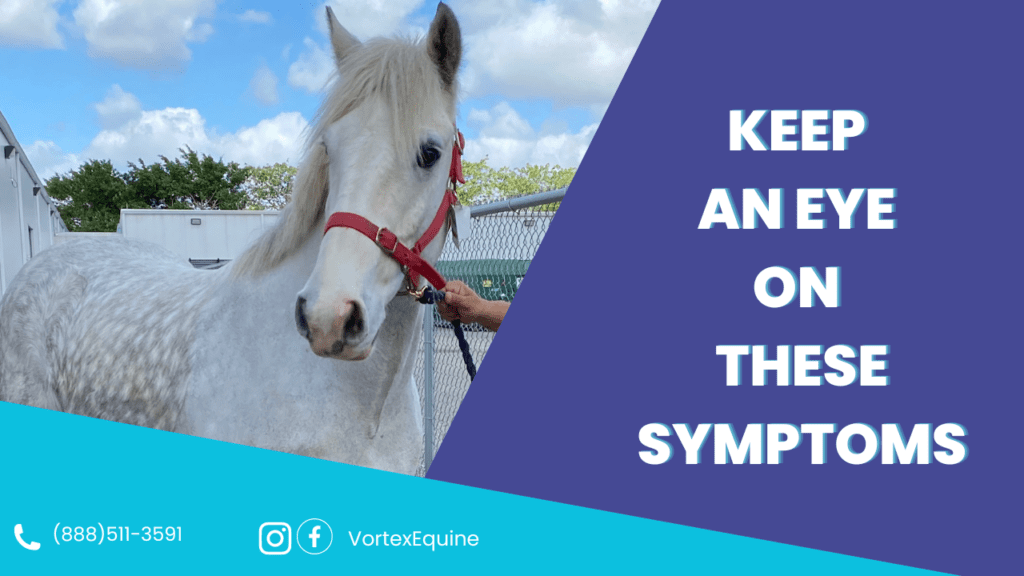Welcome back to Vortex Equine’s blog page. Today we are going to be talking about horse transportation and equine ulcers. We will also discuss what you can do to prevent ulcers and prepare your horses for travel.
We are going to take a look into the physiology and anatomy of the horse’s digestive system and find the root cause of equine ulcers, especially in high-performance show horses.

As riders and horse owners, we have all either dealt with ulcers in our horses or known someone who has. This has left many caring and diligent horse owners scrambling to figure out what to do to solve this problem. “What are the best feeds to give my horses? What are the best preventative measures against equine ulcers? How do I deal with ulcers if my horse has them and how can I tell?” These are some of the most common questions heard over the decades from horse owners by leading professionals. If you are ready to shed some light on this topic, follow along as we uncover the truth about ulcers.
The horse’s digestive system and equine ulcers:
The first thing horse owners need to have an understanding of would be a working knowledge of the horse’s digestive system. Many times, even the most well-meaning horse owners will offer their horses feeds and supplements that will actually cause more harm than good.
The horse’s digestive system is vastly different from our own. Horses are known as non-ruminant hindgut fermenters. What this basically means is that horses are simple-stomached herbivores that break down portions of their food by fermentation in the hindgut.
The horse’s digestive tract is composed of two distinct parts, they are:
- The foregut
- The hindgut
The foregut consists of the mouth, esophagus, stomach, and small intestines. The foregut is also where physical and chemical digestion takes place.
The hindgut is where the digestion and absorption (essentially, fermentation) of nonstructural carbs, proteins, and fat takes place. The hindgut consists of the cecum, the large colon, the small colon, and the rectum.
Learn about horse transportation 101 and equine charter
What are equine ulcers and how do they form?
The American Association Of Equine Practitioners has this to say about ulcers in horses:
“Unlike ulcers in humans, bacteria do not appear to cause equine gastric ulcers. Horses are designed to be grazers with regular intake of roughage. Since the horse’s stomach continually secretes acid, gastric ulcers can result when the horse is not eating regularly due to there being less feed to neutralize the acid.”
One thing that is important to understand about ulcer prevention is it is going to start at home and follow you through your show or traveling season. Here are a couple simple steps to follow to ensure your horses are at the lowest risk possible for ulcers.
- Feed low starch/ carbohydrate feeds
- Feed regular, smaller meals or offer hay in a nibble net
- Create a primarily forage-based diet for your horse
- Use nibble nets or hay nets in the trailer to neutralize your horses stomach acid
- If your horse is prone to ulcers, using Ulcergard or another Gastric guard supplement is a great choice.

Symptoms of ulcers in horses
Some of the most common symptoms of a horse who is dealing with ulcers are:
- A change in your horses disposition
- Kicking out at their belly, especially when touched or cinchy when tightening your girth
- A horse losing weight but still eating
- Grinding teeth
- Not wanting to perform or work
- Poor coat quality
- Lack of conditioning despite efforts
- Teeth grinding or even windsucking/ cribbing
It is in your horse’s best interest to have a vet out to check on your horse if you believe your horse may be at risk of ulcers or are currently dealing with them. Both a vet and equine nutritionist can help treat and monitor your horse.
Read more: 3 Things you may not know about Vortex Equine Horse Transportation.
Final thoughts on Horse Transportation and Ulcer Prevention
Horse transportation and ulcer prevention really go hand-in-hand. Your horse is most at risk for developing ulcers when they are under training stress, horse transportation stress, new situations, and even when their schedule changes.
The best way to combat ulcers is to take appropriate feeding/ supplementation measures and ensure that your horse is cared for appropriately during transportation.
Make sure to contact Vortex Equine Transportation to ensure that your horse receives the best care on the road. Less stress during transportation is linked to a reduced likelihood of ulcer formation! Know your horse is in good hands, trust the best.
If you missed our last article, find it HERE.
